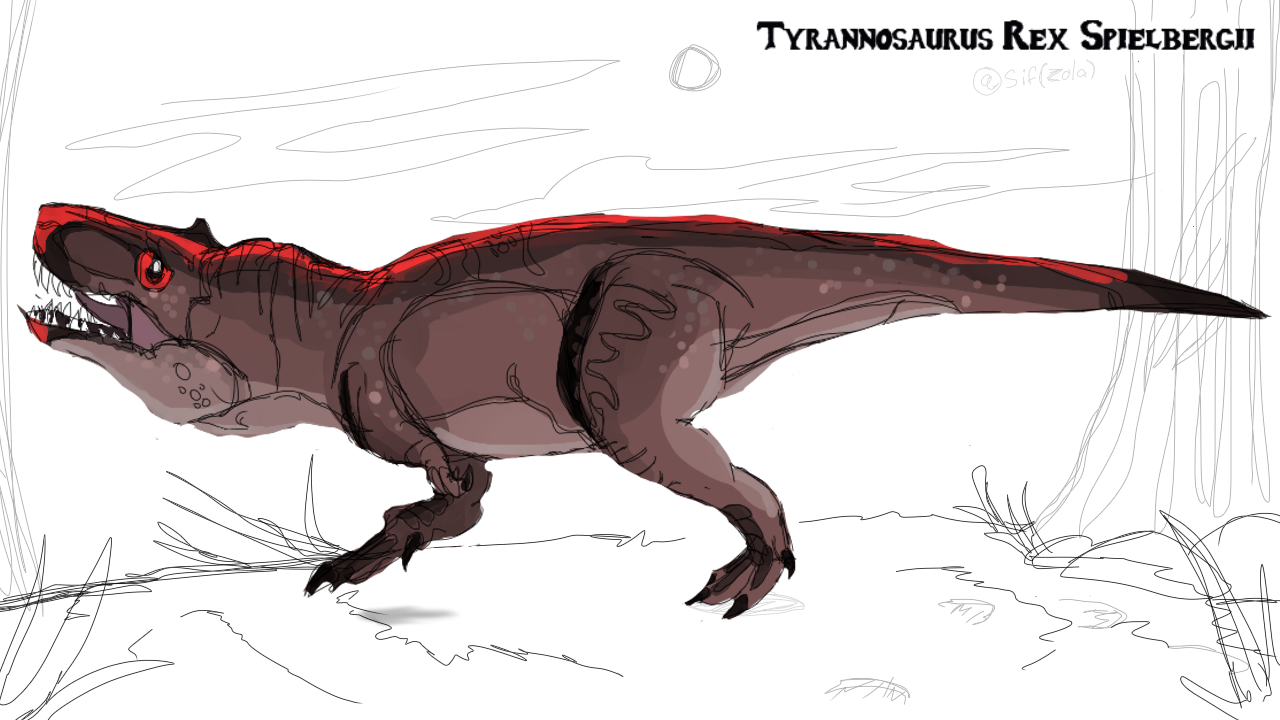Species Tyrannosaurus (multiple)Original sample genome: t. Rex | |
| |
Identifier: TYRA-S-YY-#### or TYRA-N-YY-#### |
carnivore |
Family Tyrannosauridae |
Suborder Theropoda |
The gene sequence and first successful breeding of this species took place at Isla Sorna (InGen Complex Site B) |
|
40′ (12.3m) Long, 16′ (5m) Tall |
15,000 lbs |
Measured Speed: 30mph |
|
Terrain Preference Is Primarily Forest |
|
Preference of Diet Is Carrion/Game killed by pack predators |
|
Tyrannosaurus Rex means “Tyrant Lizard King”, and they live up to their name as brutal carnivores. Their size allows them to prey on any other creature in existence though they prefer to steal a meal than have to hunt and kill for themselves.
Isla Panadero hosts two species of the popular Tyrannosaurus Rex, T.R. Nublarensis and T.R. Spielbergii. Each of these follow similar genomes and thus size and general appearance however many details differ due to the source of the extracted DNA and the process by which they were achieved.
SCGC’s own Tyrannosaurus Rex Spielbergii (Serial TYRA-S-YY-#), named for one of the financial sponsors of the project, was developed based on red blood and tissue samples discovered in the 1990s combined with coding from a similar species Dryptosaurus which was too incomplete to develop by itself. This species sports the longer arms of the donor species, but otherwise is a nearly clean base T-Rex. This species has several color variations and is easier to use for gene modification tests.
Tyrannosaurus Rex Nublarensis (Serial TYRA-N-YY-#) is named for its original intended home, Isla Nublar. While appearing much the same and retaining the species’ signature small arms, this variety of T-Rex has a fairly weak and specialized genome leaving every one looking similar in color tone (green/brown). The source of this species was amber mosquito samples collected by John Hammond’s excavation program, and DNA from african tree frogs completed the damaged sequences. SCGC has been able to better stabilize this genome since acquiring the rights to further research into this species from the International Genetics Corporation. Research data on several of InGen’s species was provided as part of a package agreement in exchange for helping capture their assets on Isla Nublar in preparation for Jurassic World construction in the early 2000s, since SCGC has more experience in that field. InGen retains all of their original creatures, all T.R. Nublarensis on Isla Panadero were hatched in Brazil or on location.
| TYRA- | NICK | SEX | KEY |
| N-03-18 | F | G | |
| N-03-19 | F | G | |
| S-04-12 | M | A | |
| S-04-18 | F | A | |
| S-05-02 | F | P | |
| N-09-10 | F | D | |
| S-09-03 | M | D | |
| S-10-01 | M | D | |

